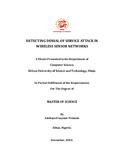Social network support for data delivery infrastructures
Thesis
Network infrastructures often need to stage content so that it is accessible to consumers. The standard solution, deploying the content on a centralised server, can be inadequate in several situations. Our thesis is that information encoded in social networks can be used to tailor content staging decisions to the user base and thereby build better data delivery infrastructures. This claim is supported by two case studies, which apply social information in challenging situations where traditional content staging is infeasible. Our approach works by examining empirical traces to identify relevant social properties, and then exploits them. The first study looks at cost-effectively serving the ``Long Tail'' of rich-media user-generated content, which need to be staged close to viewers to control latency and jitter. Our traces show that a preference for the unpopular tail items often spreads virally and is localised to some part of the social network. Exploiting this, we propose Buzztraq, which decreases replication costs by selectively copying items to locations favoured by viral spread. We also design SpinThrift, which separates popular and unpopular content based on the relative proportion of viral accesses, and opportunistically spins down disks containing unpopular content, thereby saving energy. The second study examines whether human face-to-face contacts can efficiently create paths over time between arbitrary users. Here, content is staged by spreading it through intermediate users until the destination is reached. Flooding every node minimises delivery times but is not scalable. We show that the human contact network is resilient to individual path failures, and for unicast paths, can efficiently approximate flooding in delivery time distribution simply by randomly sampling a handful of paths found by it. Multicast by contained flooding within a community is also efficient. However, connectivity relies on rare contacts and frequent contacts are often not useful for data delivery. Also, periods of similar duration could achieve different levels of connectivity; we devise a test to identify good periods. We finish by discussing how these properties influence routing algorithms.

